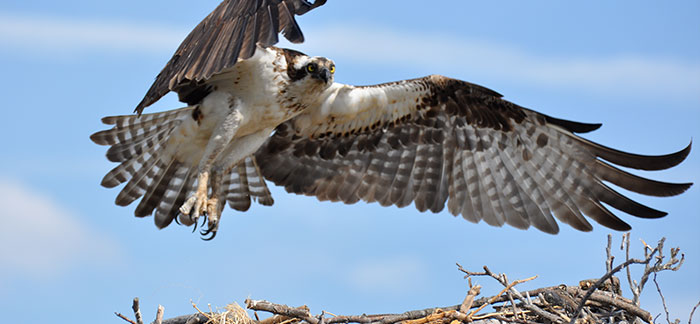Blue crab harvest regulations in Virginia will remain largely the same after the Virginia Marine Resources Commission (VMRC) concluded its June 24 meeting maintaining current rules for this iconic Chesapeake Bay species.
Blue crabs in the Chesapeake Bay have struggled in recent years, according to information released June 24 by the Chesapeake Bay Program’s Chesapeake Bay Stock Assessment Committee.
This comes as new survey results reveal blue crabs in Maryland and Virginia have dipped to the second lowest number in recent history. A comprehensive study of the causes behind the decline are expected next year.
The 2025 Blue Crab Winter Dredge Survey, conducted jointly by the Virginia Institute of Marine Science and Maryland Department of Natural Resources, estimated total crab abundance at 238 million. This figure is the second lowest since surveys began in 1990, just three years after an all-time low of 226 million crabs in 2022.
The reasons for the decline are still uncertain. Maryland and Virginia are currently conducting a comprehensive stock assessment for blue crabs, slated for completion in 2026. The last assessment was completed nearly 15 years ago in 2011. Many environmental conditions have changed during that time due to climate change, habitat loss, and the expansion of blue catfish, a voracious predator of young crabs.
Recent polling conducted by CBF earlier this year revealed that Chesapeake Bay area residents believe blue crabs are the Bay animal most in need of protection, underscoring the public's concern for this culturally and economically vital species.
Chris Moore, Virginia Executive Director of the Chesapeake Bay Foundation, issued the following statement:
"This is another year of distressing numbers for blue crabs. The stock assessment due out in early 2026 will help us understand the complex causes for this decline so that the next generation of blue crabs, watermen, and Virginians can enjoy blue crabs in the future.
“We’ve lost critical habitats like underwater grasses, and the rise of invasive predators like blue catfish pose a major threat. Climate change and polluted runoff harm young and spawning crabs. We must find a more sustainable path for this economically and environmentally important species. The stock assessment will empower decision-makers with the science needed to make blue crab recovery a reality.”
Allison Colden, CBF’s Maryland Executive Director, issued the following statement:
“Red flags are flying for blue crabs. But the exact cause of their alarming decline is still somewhat unknown. Many environmental factors could be contributing, such as the loss of underwater grasses and the voracious and invasive blue catfish. Additional insights from the 2026 stock assessment will be paramount if we are to effectively protect this staple Bay species from further decline.
“We urge Maryland and Virginia to continue working collaboratively to sustainably manage this fishery so future generations can enjoy crab feasts and loaded crab cakes for years to come.”



